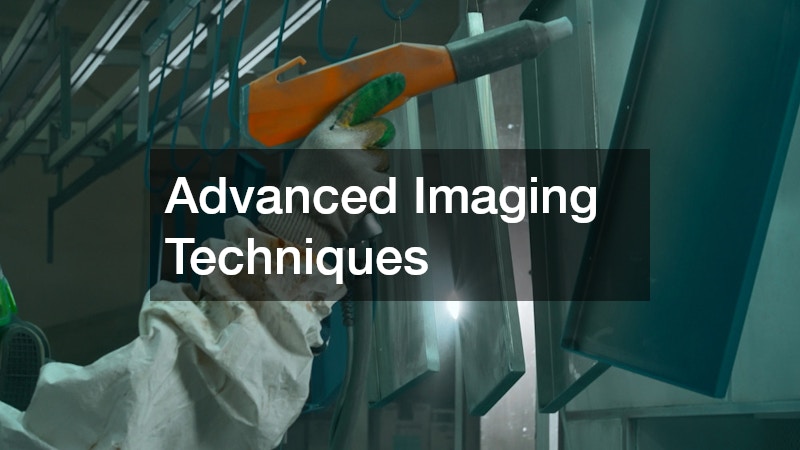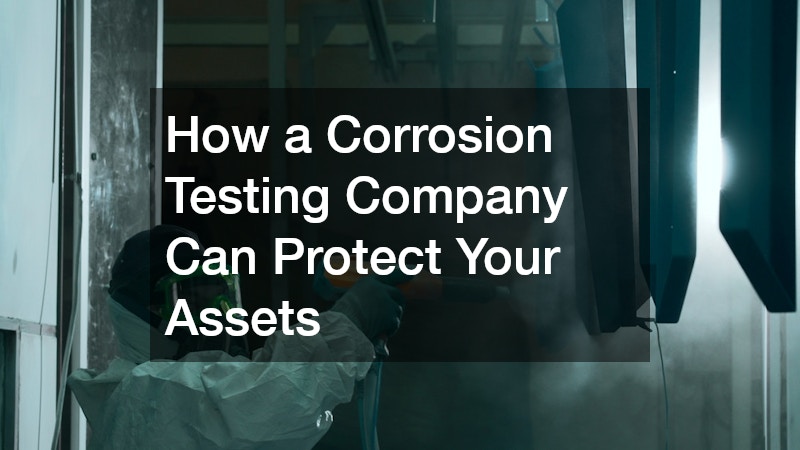Corrosion can pose a significant threat to the longevity and safety of your infrastructure. By understanding how a corrosion testing company operates, you can better protect your valuable assets. In today’s industrial landscape, safeguarding infrastructure against deterioration is crucial for ensuring economic efficiency and operational safety.
On-site Inspections
On-site inspections are fundamental services offered by corrosion testing companies. Experts visit your location to assess the state of the infrastructure and identify areas at risk of corrosion. This proactive approach allows potential problems to be addressed before they evolve into costly repairs or hazardous conditions.
Technicians use a variety of tools and techniques to conduct thorough inspections. They evaluate aspects such as material integrity, environmental conditions, and historical data of asset performance. With accurate assessments, businesses can prioritize areas that need immediate attention, thereby optimizing resource allocation.
Through on-site assessments, companies receive personalized insights into their infrastructure vulnerabilities. This hands-on evaluation forms the cornerstone of a robust maintenance strategy. By understanding specific threats, asset owners can make informed decisions about investments in protection technologies and interventions.
Laboratory Testing
Laboratory testing involves analyzing samples in a controlled environment to determine their susceptibility to corrosion. These tests can simulate various conditions that the assets might encounter, providing crucial data on material performance. Corrosion testing companies utilize laboratory analysis to offer clients a deeper understanding of potential material weaknesses.
The laboratory phase involves sophisticated techniques like salt spray tests, immersion tests, and cyclic corrosion tests. These evaluations help in assessing how materials will behave when exposed to different environments, such as varying humidity and salt concentrations. Such detailed insights are vital for selecting appropriate materials and coatings for future projects.
By conducting laboratory tests, companies can identify specific reactions that materials exhibit under stress. This is particularly useful for developing custom solutions tailored to unique operational necessities. With a thorough understanding of how materials behave in laboratory settings, asset managers can devise strategies to mitigate risks in real-world applications.
Reporting and Analysis
Once testing is completed, corrosion testing companies prepare comprehensive reports outlining their findings. These reports detail observations during on-site inspections and laboratory results, offering a holistic view of an asset’s condition. Expert analysis accompanies these results, providing clients with actionable insights and recommendations.
The reports often include diagrams, charts, and visual evidence to support the data collected. By presenting information in an accessible manner, companies enable asset owners to make informed decisions regarding maintenance and upgrades. Clear communication of results is crucial, as it empowers businesses to prioritize risks effectively and allocate resources efficiently.
Early Detection
Early detection of corrosion is crucial in preventing large-scale damage and costly repairs. By identifying issues in their nascent stages, companies can address vulnerabilities before they escalate into significant problems. This proactive approach is essential for maintaining the safety and operational efficiency of infrastructure.
The ability to detect corrosion early relies on the expertise and technology employed by testing companies. Regular inspections and monitoring ensure that even minor signs of deterioration are captured and addressed promptly. With effective early detection strategies, asset owners can significantly reduce maintenance costs and downtime.
When potential risks are found early, companies can implement preventive measures that protect assets from further damage. These interventions might include coatings, cathodic protection, or adjustments in operating procedures. By investing in early detection, asset longevity is preserved, and overall lifecycle costs are minimized.
Maintenance Planning
Effective maintenance planning is facilitated by the insights gained from corrosion testing. By understanding the specific conditions that lead to deterioration, companies can devise maintenance schedules tailored to their assets’ needs. This targeted approach results in more efficient use of resources and prevents unnecessary expenditures.
Regular testing provides data that is critical for forecasting future maintenance requirements. This foresight allows companies to plan for repairs and upgrades without disrupting operations. A well-structured maintenance plan ensures that critical infrastructure remains functional and safe over its intended lifespan.
Additionally, strategic maintenance planning helps to extend the life of assets and improve return on investment. By using corrosion testing as a tool for informed decision-making, organizations can enhance the sustainability of their operations. Continuous assessment and adjustment of maintenance schedules based on test results ensure infrastructure reliability and cost-effectiveness.
Extension of Asset Life
Corrosion testing plays a vital role in extending the life of industrial assets. By regularly monitoring conditions and implementing recommendations, companies can significantly delay the onset of severe deterioration. This extension of asset life translates into substantial financial savings and reduced replacement demand
Ongoing monitoring helps detect subtle changes in material integrity that may not be apparent through casual observation. Advanced testing methods enable technicians to pinpoint areas that require attention, preventing minor issues from becoming serious liabilities. With continuous oversight, infrastructure can remain safe and functional well beyond its expected lifespan.
Advanced Imaging Techniques
Advanced imaging techniques, such as 3D imaging and thermal imaging, provide comprehensive insights into asset integrity and potential areas of concern. These technologies allow for the swift detection of anomalies, guiding corrective actions. High-resolution imaging offers a detailed view of surface and subsurface defects, facilitating accurate assessments.
Engaging the services of a corrosion testing company can be an invaluable step in safeguarding your assets. Utilizing advanced techniques and comprehensive testing services ensures that potential threats are mitigated, leading to longer asset life and reduced maintenance costs. By investing in ongoing assessments, organizations contribute to safer operational environments and sustainable asset management.


